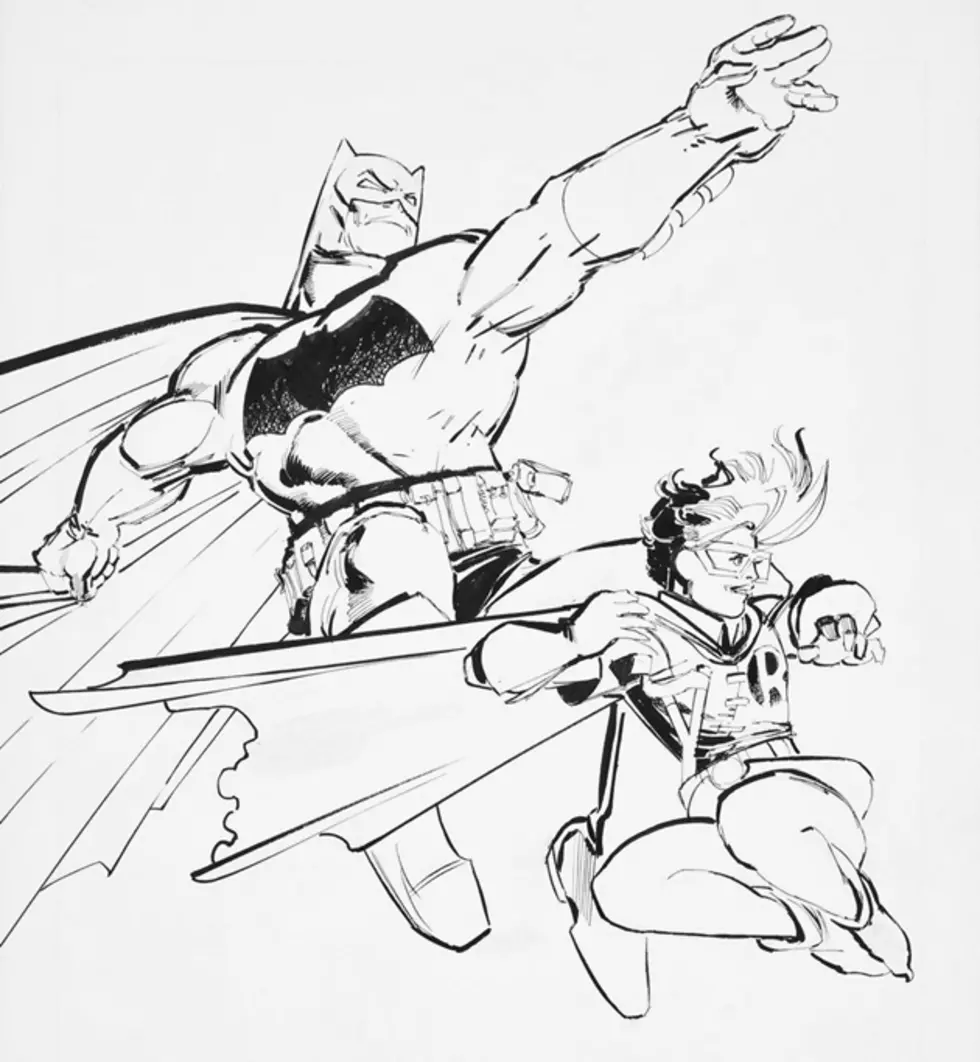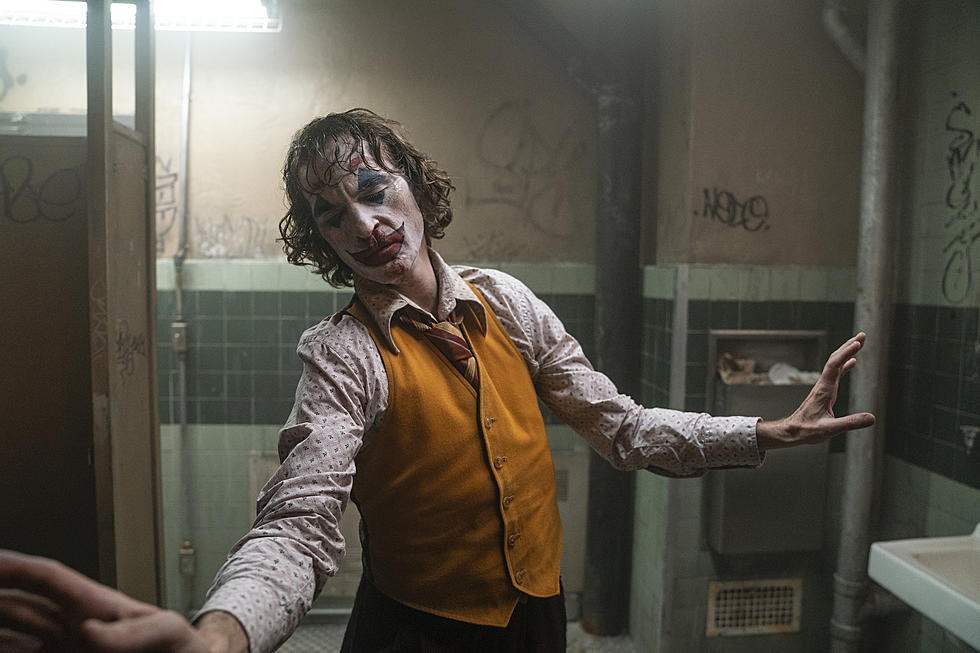
Real Troublemaker: Celebrating The Work Of Frank Miller
Though his work has been divisive over the past decade or more, it's hard to deny just how big a name Frank Miller is in the world of comics. He's one of just a handful of comics creators you might consider a household name, in part because so many of his comics have become cultural landmarks, and in part because of his influence and participation in the film industry. Like him or not, Frank the Tank, born on this day in 1957, is an institution.
Like many in his generation, Miller got his start in comics in a letters column. At age 16, he had a letter to the editor published in 1973's The Cat #3, in which praised the book's tough female protagonist and wrote he was "sick of the helpless-female types" in comics. (He also added that he understood they were "necessary and nice to look at.")
A few years later, Miller moved from his hometown in Olney, Maryland to New York. He showed his work to artist Neal Adams, who recommended him for work at Gold Key Comics. In 1978, Miller worked uncredited on the licensed Twilight Zone book. From there, he went on to pencil a few short war stories at DC Comics, and he produced a full, 17-page story in Marvel's John Carter, Warlord of Mars #18.
The following year, Miller got steady work as a fill-in and cover artist, notably on two issues of Spectacular Spider-Man, later collected with a few other issues in The Complete Frank Miller Spider-Man. Those two issues featured a guest appearance from Daredevil, a character who Miller didn't feel was being particularly well-served at the time. Miller asked staffer Jo Duffy if he would work on the Daredevil series, and he started as penciler, working with writer Roger McKenzie, on issue #158.
When sales didn't improve, editor Denny O'Neil fired McKenzie and put Miller on as writer and artist, having been impressed with Miller's writing on a backup story. Starting with issue #168, Miller created a whole world of ninjas --- including the assassin Elektra --- for Daredevil to adventure in, and brought a darker tone to the book.
As the issues progressed, Miller got deeper into writing and started shifting more of the art duties onto inker Klaus Janson. He ended his run with 1983's issue #191, though he would return to Daredevil and Elektra several more times in the years to come, with the 1986 storyline Born Again, with artist David Mazzucchelli; and graphic novel Daredevil: Love and War, with artist Bill Sienkiewicz. The eight-issue Elektra: Assassin series, also with Sienkiewicz, also started that year. A reworked origin story, Daredevil: The Man Without Fear, with art by John Romita Jr., came out in 1993.
During his Daredevil run, Miller would start working on another character with whom he'd forever be associated: Batman. In 1980, he worked with O'Neil (this time O'Neil was serving as writer) on a short Christmas story titled "Wanted: Santa Claus --- Dead or Alive" in DC Special Series #21.
Six years later, after finishing his Daredevil run and working on the first Wolverine limited series with writer Chris Claremont and his own original miniseries Ronin, Miller released The Dark Knight Returns, a four-issue prestige-format series that would impact how Batman would be portrayed for decades to come. The series focused on an older Batman who used more extreme methods in a darker, more sinister world.
The following year, Miller once again worked with Mazzuchelli on the four-issue Batman: Year One storyline, which turned back the clock and retold the Batman's origin, again defining the character for the era.
Miller closed out the 1980s taking up the mantle of an advocate for creator rights, eventually vowing to stop working with DC Comics when the publisher proposed a comics rating system. By the early '90s, Miller was working exclusively for Dark Horse comics (though he did finish out some commitments to Marvel). Those years saw the release of Hard Boiled with Geof Darrow, two series starring protagonist Martha Washington, and the first Sin City series, The Hard Goodbye. Miller would release six more Sin City volumes throughout the decade. In 1995, Miller and Darrow collaborated on Big Guy and Rusty the Boy Robot, which would be adapted into a Fox Kids animated series.
Miller would also dive into Hollywood in the 1990s, penning a mostly unused script for RoboCop 2 (Miller's script would eventually be adapted into an Avatar comic series) and the script for RoboCop 3. In 1998, he and colorist Lynn Varley released the graphic novel 300, about the Battle of Thermopylae, which would be adapted into a movie in 2007. By that time, Miller had graduated to full-on directing, co-directing the 2005 film adaptation of Sin City and its 2014 sequel with Robert Rodriguez, and solely directing the 2008 adaptation of friend Will Eisner's The Spirit.
In 2001, Miller broke his embargo on working with DC to release a sequel to The Dark Knight Returns, titled The Dark Knight Strikes Again. The series sold well, but was lambasted by critics. The Montreal Gazette called the art "rushed and garish" and otherwise "regrettable." In 2005, Miller once again returned to Batman, working with artist Jim Lee on All-Star Batman and Robin the Boy Wonder. The series ran for 10 issues, came out only sporadically, and was also met with considerable criticism for its almost parodic grittiness and its treatment of female characters.
In 2015, Miller co-wrote a third Dark Knight sequel, subtitled The Master Race, with writer Brian Azzarello and artist Andy Kubert. Miller made some public statements about the series that cast doubt on just how involved he was in its production, telling Vulture that the pitch for the book "was not my call! That was generated by them."
Miller's most controversial work by far was the 2011 graphic novel Holy Terror. Originally devised as a Batman story, the book follows the superhero The Fixer as he takes on Al Qaeda. Some critics derided it as propaganda, and even Miller said it was "bound to offend just about everybody." That same year, Miller made comments about the Occupy Wall Street movement in which he called participants "a pack of louts, thieves, and rapists."
Miller has become something of a polarizing figure in comics. Yet his contributions to the medium, his influence on other writers and artists, and his efforts to bring attention to creator rights cannot be ignored.
In Eisner/Miller, a 2005 book consisting of a set of lengthy conversations between the two creators, Miller characterized himself thusly: "In the world of comic books, 'troublemaker' means someone who has some sense of dignity."
Happy birthday, troublemaker.
More From ComicsAlliance









